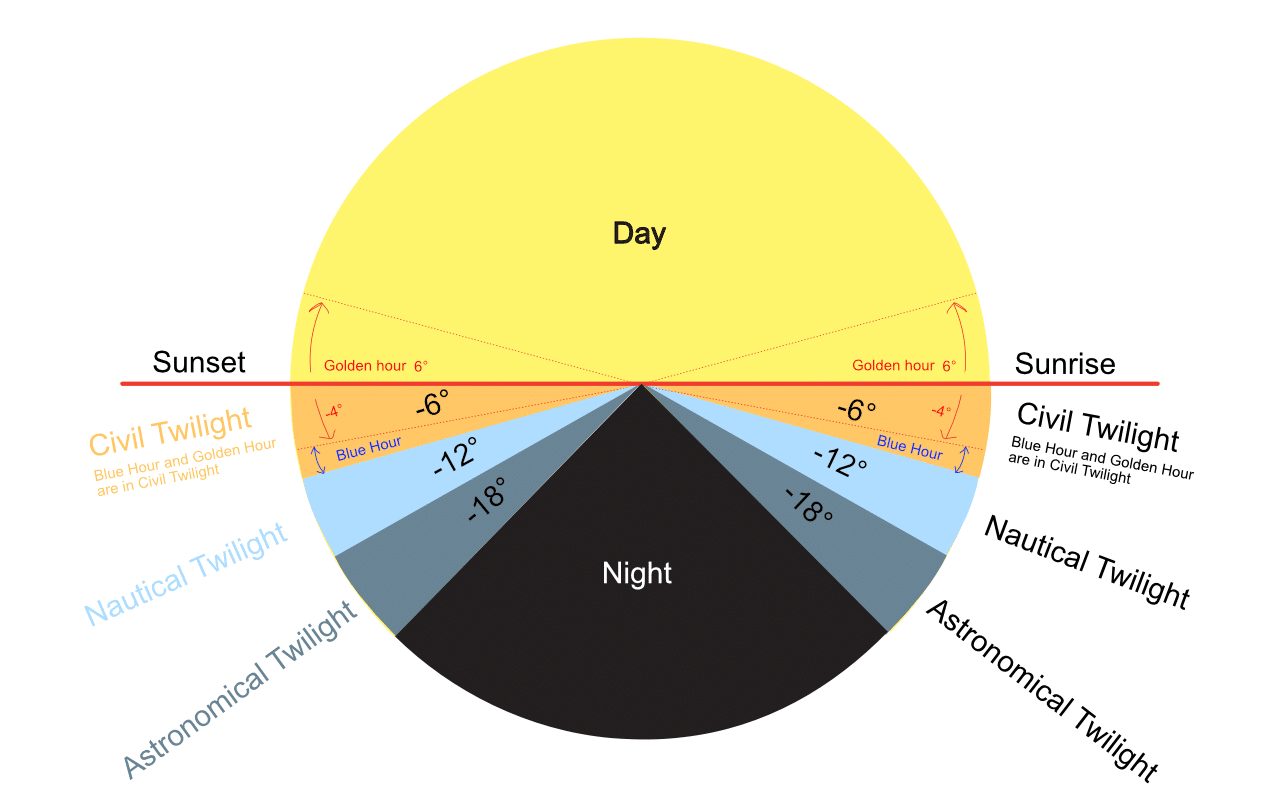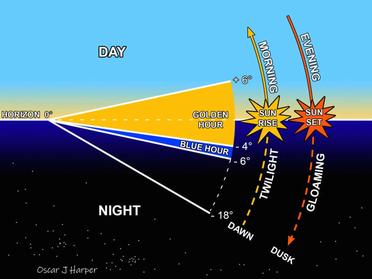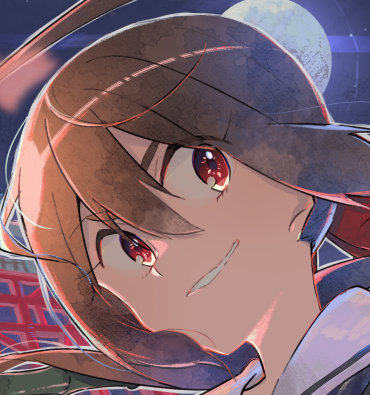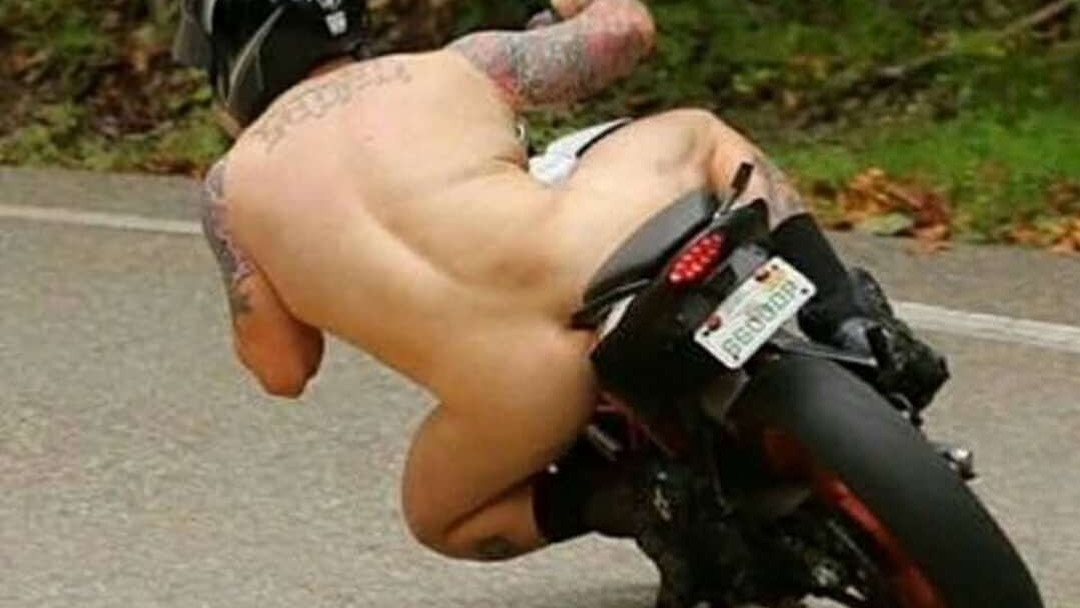I find that sunrise has a more white and blue look to it, while sunset has more of a red and orange look. Is that really what they look like, or is it because of some personal bias, such as comparing sunrise to the darkness just before it and sunset to the bright blue sky?
Nope, you’re absolutely right. These time windows are called “Golden Hour” and “Blue Hour” and are one of the basic principles to keep in mind and use in photography.
Here’s a page explaining things a bit more: https://www.meredithfontana.com/post/what-is-golden-hour
The page you link says that Golden Hour and Blue Hour occur during both sunrise and sunset, so I’m not sure how that shows what the difference is between sunrise and sunset.
It’s true that it’s mirrored, but the difference is that Golden Hour is after the sun has risen, and before the sun has set. Before sunrise it’s Blue, and after sunset it’s also Blue. Here’s a visualisation:


I figured OP just mentally attributed it to a difference between sunrise and sunset based on their experience so far, so I didn’t mention it initially.
This is it!! What I consider sunrise is the blue hour when the light starts showing up and I know it’s a new day. I can start seeing the surroundings and hear the sounds of everything waking up. What I consider sunset is the golden hour when I know I have just a few minutes left in the day. I hear things winding down and know that I wont be able to see much anymore. That’s why I perceive them as differently. The cue I used to notice them is their initial impact, so that’s what I associated with it. I knew I wasn’t crazy! Thank you very much :)
Fascinating, thanks for the link.
I’m no photographer but I do whip out the phone while out on a trail somewhere and occasionally go out near sunrise or sunset. I know using a phone will never be real camera quality but it’s fun to try anyway. Article has my gears turning on where those special times could yield interesting results
Phone’s a real camera. The best camera is the one you’ve got and use. Take shots, enjoy the process, and have fun.
That’s true they’re pretty good now.
The context of my comment that you had no way of knowing is I’ve got a family member who is into photography, like buy themselves a 3k camera from something or other fancy brand level of interest in it. You can tell there’s a difference, even on my newer iPhone.
But yeah it’s pretty darn good for a pocket camera!
The best camera is the one you have with you
Yes! Also, I can take “real” photos and store them on an SD card and never see them again, or I can have all my photos in my pocket for whenever I want a reminder of the good times I’ve had, or I want to show a friend
Phone cameras are pretty damn good now. Don’t fret about that part.
Most places will have more stuff in the air in the eveming. Pollution, dust etc.
They really look different. The geography and atmospheric conditions that affect how the sun and sky looks, including pollution, differ from East to West of wherever you are and also from morning to evening.
In my experience as someone who rarely gets up for sunrise, they are not really different. I’m sure there is variation caused by rising vs diving temperature, humidity, cloud patterns caused directly by solar radiation, etc. But, functionally, pretty similar. And no, pollution does not make sunsets prettier. (will explain below)
The main difference is my perception and my ability to predict what comes next. When the sun is setting, I have lots of warning because I can see the sun, obviously. With my spot at the beach, I can watch the sun go all the way down. I know exactly when it disappears and then I watch it a little while longer as the oranges turn even redder. I’m coming from my daytime perception of color and staring at the sun, further delaying my dark adaptation.
Sunrise, on the other hand, is more of a surprise. The sky colors are morphing, but I can’t quite tell when the sun will pop up. I’m in relative darkness so my color perception is different. Last one I watched I had my star app open to better predict the sun’s appearance and it made it feel a little more like the sunsets I watch at the same spot. As the reds and oranges fade, I continue to normalize the white balance, so to speak, so it seems like a faster event as it approaches normal daylight color.
Pollution. No, those pretty, dramatic sunsets are not caused by pollution. That’s a myth you can look up, so here’s my observations of why we perceive it as truth. I’ve spent a week at a time a few times a year for a decade watching just about every sunset on an ocean-like horizon over the rest of my country. The sun is creating a massive, flat rainbow of color. The reds get pulled down towards earth due to refraction in the atmosphere than the blue end. On cloudless evenings, the sky, being a poor reflector, turns a sort of yellow-orange hue while the sun itself is the only thing visibly turning red. That flat rainbow array still exists every time, but it’s lost to space as it skims the atmosphere without hitting anything more solid. Think of the classic prism refraction rainbow being projected tangentially onto a basketball. But, if there’s some spotty cloud cover between you and 1000 miles west, that rainbow will be blocked and reflected by some clouds instead of flying miles overhead and missing you. Just about all pretty sunset photos have clouds. The solid orange and Orange-yellow portion of the rainbow will be bouncing off the clouds in a patch of sky that still looks blue or pale white. That’s where the drama comes from.
I’d also add sunsets blocked at the final stages by very distant cloud banks have made what seem to be the reddest finales I’ve ever seen, a few minutes after sunset, because the light is still being refracted, reflected, and refracted again from even lower than before. I never pack up and go in for these, unlike most people at the beach. On the opposite end, I don’t mind the boring cloudless sunsets because it means I’ll have at least a few hours of clear night skies most times. Stargazing is what I’m really there for.
That’s a good point I overlooked because it’s rare for me to have such polluted skies such as from massive wildfires. Pollution can definitely make the reds deeper, but it comes at the cost of muted colors overall. Human particulate pollution isn’t really on the scale of what’s needed to have a visible effect like that either, so wildfire smoke is the most common source of visible effects





